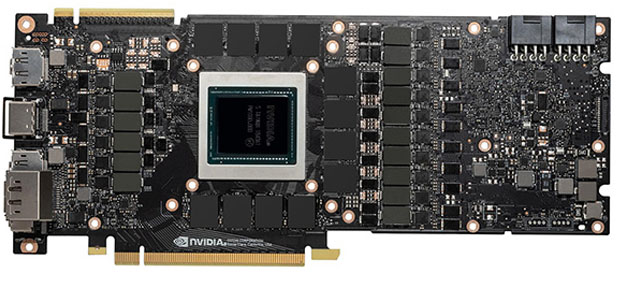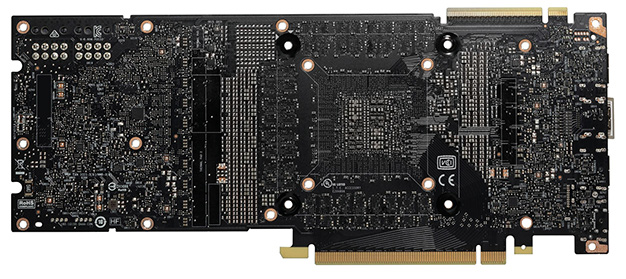NVIDIA Titan RTX Review: A Pro Viz, Compute, And Gaming Beast
Although some folks in the enthusiast community consider the Titan RTX a card for gamers, this particular Titan is being targeted at budding data scientists and content creators first and foremost. NVIDIA is not going to discriminate against gamers with the large budgets necessary to buy a card like the Titan RTX, though looking at this product strictly from the standpoint of gamers doesn’t make much sense, in light of its pricing and massive 24GB of memory. That’s not necessarily true for previous-gen Titans, but NVIDIA’s strategy has been modified this time around.
We will, of course, take a look at some gaming-related performance metrics with the Titan RTX, but we’re going to cover an array of other workloads as well. Before we get into the numbers though, let’s see what the NVIDIA Titan RTX is all about...
|
The last few generations of NVIDIA Titan GPUs based on Pascal, Volta, and Turing are compared in the table above. As you can see, the three models represented here are completely different animals. The Pascal-based Titan XP lacks Tensor or RT cores, has fewer CUDA cores, ROPs, and texture units, and it uses previous-gen memory technology, versus the newer cards. The Titan V has more CUDA and Tensor cores, a wider memory interface due to its use of High-Bandwidth Memory (HBM), and additional texture units versus the Titan RTX, but it lacks RT cores and its lower clocks result in lower peak performance, despite its higher core count. The Titan RTX also supports some additional compute modes the others do not. All told, the Titan RTX offers higher computer performance, double the memory, more peak memory bandwidth, and support for RTX technology, in comparison to its previous-generation siblings.
Although it is not in the table, comparing the Titan RTX to the consumer-class GeForce RTX 2080 Ti yields similar findings. The two cards may both be based on the Turing TU102 GPU, but said GPU is fully enabled on the Titan RTX. A couple of SMs (streaming multiprocessors) are disabled on the GeForce RTX 2080 Ti, which results in a lower overall CUDA core count (4608 vs 4352), fewer RT and Tensor cores, and the 2080 Ti has fewer texture units (288 vs. 272) and ROPs (96 vs. 88), and a narrower memory interface as well (384-bit vs. 352-bit). Its memory allotment is also less than half the size -- the GeForce GTX 2080 Ti has 11GB of GDDR6 memory, whereas the Titan RTX has a whopping 24GB.
In terms of its physical design, however, the Titan RTX is fundamentally similar to the GeForce RTX 2080 Ti, save for its badges and the gold anodization on its metal surfaces. Whereas the GeForce RTX 2080 Ti has a silver / platinum hue, the NVIDIA Titan RTX features a brushed and glossy champagne gold finish all around.
The Titan RTX feature metal accents or shrouds that cover virtually every surface, with a blacked-out mounting bracket, a heavy-duty etched backplate, and a lighted TITAN logo running along the top-edge. The traditional SLI connectors that are also normally located along the top-edge of previous-gen cards are gone, however, and replaced by the newer NVLink connector that offers significantly more bandwidth. Gold bolts and accents tie the design together, and result in one heck of an eye-catching graphics card.
There are dual, 13-blade axial fans on the card that sit atop a high-capacity vapor chamber that is double the size of Pascal's cooling solution. The vapor chamber features a thick baseplate and is coupled to a dense array of heatsink fins by multiple, embedded heat pipes. The entire assembly is very rigid and heavy, and covers the entire front of the PCB. NVIDIA claims the new cooler design is significantly quieter than previous-gen cards, while also offering better cooling performance throughout the entire voltage / frequency curve. We’ll talk more about that a little later.
The NVIDIA Titan RTX has a GPU base clock of 1350MHz with a boost clock of 1770 MHz; its 24GB of GDDR6 memory is clocked at 7000MHz, and has an effective data rate of 14Gbps. At those speeds, the Titan RTX has a TDP of 280 watts, not including the additional 35W that comes into play should the new VirtualLink / USB Type-C connector be used, and offers peak memory bandwidth of 672GB/s, a max textured fillrate of 388.8GTexels/s, and 16.3TFLOPs of FP32 compute -- those are all the best numbers offered by a Turing-based GPU.
To supply power to the board, the Titan RTX is outfitted with a pair of 8-pin PCI Express feeds. NVIDIA has also revamped the all-digital VRM designs on the card versus previous-generation offerings to smooth power delivery, reduce noise, and generally be more robust. The Titan RTX is outfitted with a 13-phase power array, similar to the GeForce RTX 2080 Ti.
Outputs on the Titan RTX consist of a trio of DisplayPorts (v1.4 with DSC 1.2), an HDMI 2.0b port (with HDCP 2.2), and a proprietary VirtualLink USB Type-C port, which offers a 4-lane HBR3 DisplayPort and USB 3.1 Gen 2 compatibility over a single connector.










